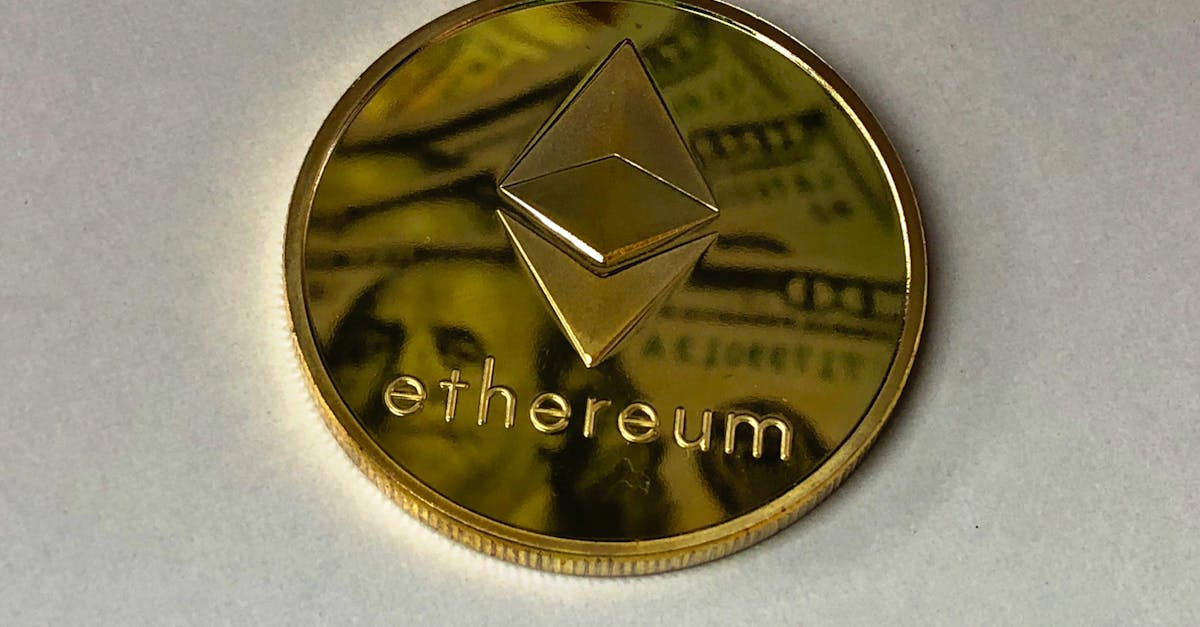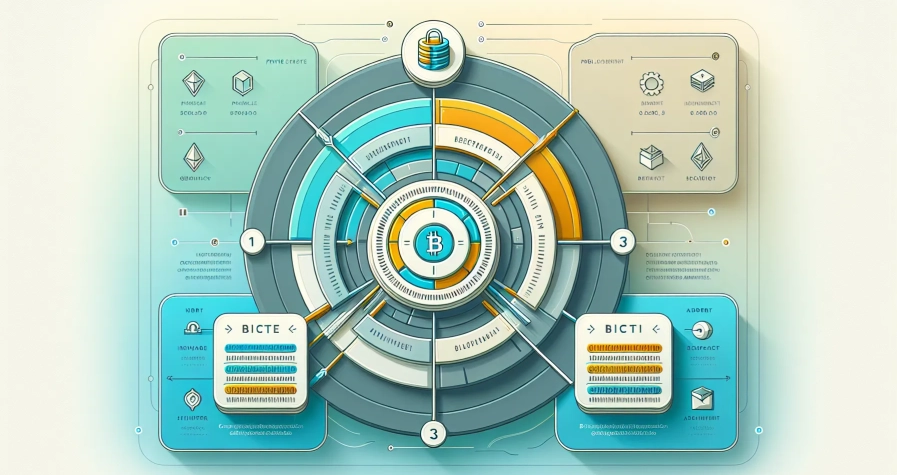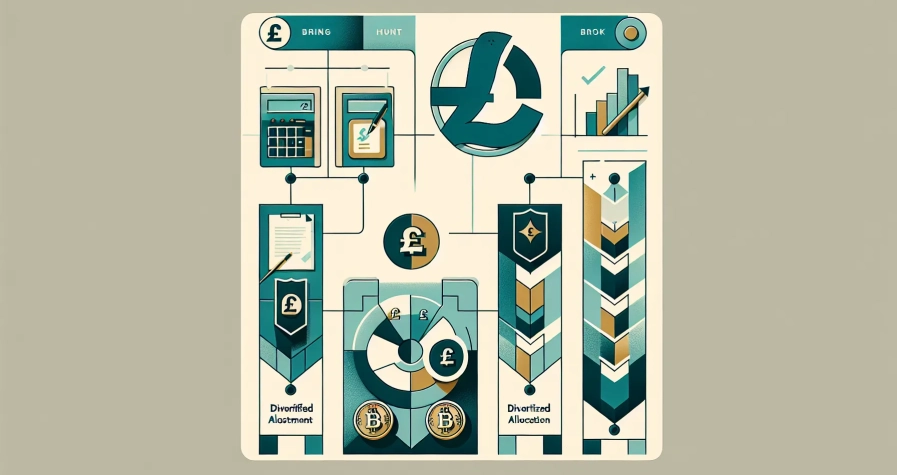Key Takeaways
- Rollups bundle multiple transactions together before submitting them to Ethereum’s mainnet, reducing gas fees by 90-95% and increasing transaction speeds from 15 TPS to 1,000-4,000 TPS whilst maintaining Ethereum’s security guarantees.
- Two main types exist: Optimistic Rollups (like Arbitrum and Optimism) assume transactions are valid but require 7-day withdrawal periods, whilst Zero-Knowledge Rollups (like zkSync and Polygon zkEVM) provide instant finality through cryptographic proofs.
- Significant cost and speed improvements make previously expensive operations economically viable, with transaction fees dropping from £20-100 to £0.10-2.00 and confirmation times reducing from 12-15 seconds to 1-3 seconds.
- Current limitations include withdrawal delays for Optimistic Rollups and technical complexity for ZK Rollups, though these challenges are being addressed through ongoing development and Based Rollups technology.
- Future developments like Based Rollups and Proto-danksharding will further enhance decentralisation and reduce costs, positioning rollups as Ethereum’s primary scaling solution for supporting billions of users globally.
Ethereum’s growing popularity has brought exciting opportunities alongside significant challenges. If you’ve tried to use the network during peak times, you’ve likely experienced slow transaction speeds and eye-watering gas fees that can make simple swaps cost more than your morning coffee.
Enter rollups – Ethereum’s most promising scaling solution that’s transforming how we interact with decentralised applications. These innovative technologies process transactions off the main Ethereum network whilst maintaining its security guarantees, offering you faster speeds and dramatically lower costs.
Whether you’re a DeFi enthusiast tired of paying excessive fees or a developer looking to build more accessible dApps, understanding rollups is crucial for navigating Ethereum’s future. Let’s explore how these game-changing solutions work and why they’re considered the key to unlocking Ethereum’s full potential.
What Are Rollups in Ethereum?
Rollups represent Layer 2 scaling solutions that bundle multiple transactions together before submitting them to Ethereum’s main blockchain. These solutions execute transactions on separate chains whilst inheriting Ethereum’s security properties through cryptographic proofs.
You encounter two primary rollup types when exploring Ethereum scaling: Optimistic Rollups and Zero-Knowledge (ZK) Rollups. Each type processes transactions differently but achieves the same goal of reducing congestion on the main network.
How Rollups Function
Rollups aggregate hundreds or thousands of transactions into single batches. Transaction data gets compressed and posted to Ethereum’s mainnet as calldata, which costs significantly less than individual transaction processing. The rollup operator collects transactions from users, processes them off-chain, and periodically commits the results to Ethereum.
Your transactions benefit from this batching process because multiple operations share the gas costs. A single rollup batch can contain 100-1000 transactions, distributing the base transaction fee across all participants.
Security Mechanisms
Rollups maintain security through different verification methods depending on their type:
Optimistic Rollups
- Assume transactions are valid by default
- Use fraud proofs during 7-day challenge periods
- Allow validators to dispute incorrect state transitions
- Examples include Arbitrum and Optimism
ZK Rollups
- Generate cryptographic proofs for each batch
- Provide instant finality without challenge periods
- Use zero-knowledge proofs to verify transaction validity
- Examples include Polygon zkEVM and zkSync Era
Transaction Processing Improvements
| Metric | Ethereum Mainnet | Rollup Solutions |
|---|---|---|
| Transactions per second | 15 TPS | 1,000-4,000 TPS |
| Average gas costs | £20-100 | £0.10-2.00 |
| Confirmation time | 12-15 seconds | 1-3 seconds |
| Finality period | 12-15 seconds | Instant to 7 days |
Your rollup transactions experience dramatically reduced costs because the expensive computation happens off-chain. Only the compressed transaction data and proof verification occur on Ethereum’s mainnet, preserving security whilst minimising resource usage.
Data Availability and Storage
Rollups store transaction data on Ethereum’s blockchain to ensure anyone can reconstruct the rollup state. This data availability guarantee prevents rollup operators from censoring transactions or manipulating balances. You can always withdraw your funds even if the rollup operator becomes unresponsive.
The compressed transaction data typically consumes 90-95% less block space than equivalent mainnet transactions. This compression enables rollups to achieve their significant cost reductions whilst maintaining decentralisation and security properties.
How Do Rollups Work?
Rollups execute your transactions off-chain whilst maintaining Ethereum’s security through sophisticated batching and verification mechanisms. Understanding these processes reveals why rollups deliver significantly faster speeds and lower costs compared to direct mainnet execution.
Transaction Batching Process
Operators collect your individual transactions and aggregate them into compressed batches containing hundreds or thousands of operations. These batches transform multiple separate smart contract calls into a single on-chain update, distributing gas costs across all participants in the batch.
Sequencers process your transactions off-chain by executing smart contracts, computing state changes, and compressing transaction data into efficient formats. The compressed data typically consumes 90-95% less block space than equivalent mainnet transactions, creating substantial cost savings whilst preserving all necessary information for verification.
Your transaction enters a queue where operators prioritise based on gas prices and transaction types. Once processed, the operator submits the entire batch to Ethereum as one transaction, allowing you to benefit from shared infrastructure costs and improved throughput rates.
Data Availability and Security
Transaction data for each batch remains accessible on Ethereum’s blockchain, ensuring you can always verify correctness and reconstruct rollup states. This data availability mechanism protects your funds even if rollup operators become unresponsive or malicious.
Two distinct validation approaches secure your transactions:
Optimistic rollups assume your submitted transactions are valid but provide a challenge window lasting 7 days where fraud proofs can dispute invalid batches. During this period, validators monitor state transitions and submit fraud proofs if discrepancies occur, reverting invalid batches and penalising dishonest operators.
Zero-knowledge rollups generate cryptographic proofs that instantly verify each batch’s correctness when submitted to Ethereum. These succinct proofs enable immediate transaction finality without waiting periods, as mathematical verification guarantees state transition validity.
Your transaction security inherits Ethereum’s decentralisation and consensus mechanisms because reverting rollup states requires reverting Ethereum itself. This cryptographic linkage ensures rollup operators cannot manipulate your funds or transaction history without detection and punishment through Ethereum’s validator network.
Types of Ethereum Rollups
Ethereum rollups come in two primary categories that differ fundamentally in how they validate transactions. Understanding these types helps you choose the most suitable solution for your specific blockchain needs.
Optimistic Rollups
Optimistic rollups operate on the assumption that all submitted transactions are valid by default. You benefit from this “optimistic” approach through significantly lower computational costs and simpler implementation processes.
The system includes a challenge period lasting approximately 7 days during which anyone can submit fraud proofs to dispute invalid transactions. Your transactions process immediately but face withdrawal delays due to this security window.
Key characteristics include:
- Low gas fees averaging 10-100 times cheaper than Ethereum mainnet
- High EVM compatibility allowing easy migration of existing smart contracts
- Simpler architecture reducing development complexity for builders
- Active monitoring requirement ensuring network participants watch for fraudulent activity
Leading examples:
- Arbitrum processes over 40% of Layer 2 transaction volume
- Optimism hosts major DeFi protocols like Uniswap and Synthetix
The fraud proof mechanism ensures security by allowing validators to challenge suspicious batches with mathematical evidence of incorrect state transitions.
Zero-Knowledge Rollups
Zero-knowledge rollups use advanced cryptographic proofs called SNARKs (Succinct Non-Interactive Arguments of Knowledge) to verify transaction validity before finalising batches on-chain. You experience enhanced security through mathematical guarantees rather than economic incentives.
Each batch includes a cryptographic proof demonstrating that all transactions within comply with network rules. Your withdrawals process instantly since validity confirmation occurs upfront rather than through challenge periods.
Key advantages:
- Instant finality eliminating withdrawal delays entirely
- Superior security through cryptographic verification instead of fraud detection
- Enhanced privacy potential hiding transaction details while proving validity
- Higher throughput capacity processing thousands of transactions per second
Technical challenges:
- Complex implementation requiring specialised cryptographic expertise
- Limited smart contract support though rapidly improving across platforms
- Higher computational overhead for proof generation processes
Notable platforms:
- zkSync offers EVM-compatible smart contract functionality
- StarkNet provides custom programming language optimised for zero-knowledge proofs
The mathematical proofs ensure that manipulating transaction data becomes computationally impossible rather than economically disincentivised.
Benefits of Using Rollups
Rollups deliver three fundamental advantages that transform your Ethereum experience. These benefits address the core limitations that traditional Layer 1 processing creates for users and developers.
Reduced Gas Fees
You’ll experience dramatically lower transaction costs when using rollups compared to Ethereum mainnet operations. Rollups aggregate multiple transactions into single batches, distributing gas fees across all participants rather than charging each transaction individually. This cost-sharing mechanism reduces your expenses by 90-95% compared to equivalent mainnet transactions.
The batch processing model transforms expensive individual operations into shared overhead costs. When you execute transactions through rollups like Arbitrum or Optimism, your gas fees represent only a fraction of the total batch cost. Transaction data compression further reduces these expenses by minimising the blockchain space your transactions consume on Ethereum’s main layer.
Increased Transaction Throughput
You’ll access significantly faster transaction processing speeds through rollup networks. Rollups execute transactions off-chain on Layer 2 networks before submitting compressed proofs to Ethereum’s mainnet, enabling parallel processing that bypasses mainnet congestion. This architecture increases transaction capacity from Ethereum’s baseline 15 transactions per second to thousands of transactions per second on rollup networks.
Sequencers process your transactions immediately on Layer 2, providing near-instant confirmation times. The off-chain execution eliminates waiting periods caused by network congestion, whilst maintaining security through periodic batch submissions to Ethereum’s main blockchain. Popular rollups consistently achieve sub-second confirmation times during normal operating conditions.
Enhanced Scalability
You’ll benefit from improved network scalability that solves Ethereum’s capacity limitations without compromising security or decentralisation. Rollups address the blockchain trilemma by maintaining Ethereum’s security properties whilst dramatically increasing throughput and reducing costs. This scalability enhancement enables high-frequency applications like on-chain gaming, DeFi trading, and micro-transactions that weren’t economically viable on Layer 1.
Rollups inherit Ethereum’s decentralised security model through cryptographic proofs and data availability guarantees. Your transactions remain protected by Ethereum’s validator network even when processed on Layer 2, ensuring that scalability improvements don’t sacrifice the security foundations that make Ethereum trustworthy. This combination enables applications requiring both high performance and robust security guarantees.
Popular Rollup Solutions
Ethereum rollup solutions offer distinct approaches to scaling, with each platform providing unique features tailored to specific user requirements. These leading platforms demonstrate the practical implementation of rollup technology in today’s blockchain ecosystem.
Arbitrum and Optimism
Arbitrum stands as the most widely adopted Optimistic Rollup solution, processing transactions with EVM compatibility that allows developers to deploy existing smart contracts without modifications. The platform utilises fraud proofs to challenge invalid transactions during a 7-day challenge period, achieving transaction throughput of approximately 40,000 transactions per second whilst maintaining gas fees at roughly 90% below Ethereum mainnet costs.
Optimism operates through single-round fraud proofs that streamline the challenge process compared to multi-round systems. The platform supports Ethereum’s existing tooling and infrastructure, enabling seamless migration of decentralised applications with minimal code changes. Optimism’s architecture reduces withdrawal times to 7 days for mainnet finality, though transactions achieve practical finality within minutes for most use cases.
Both platforms inherit Ethereum’s security model whilst offering significantly improved performance metrics. Arbitrum processes over 2 million daily transactions, whilst Optimism handles approximately 800,000 daily transactions, demonstrating substantial adoption across DeFi protocols and NFT marketplaces.
Polygon zkEVM and zkSync
Polygon zkEVM delivers Zero-Knowledge Rollup capabilities with full Ethereum Virtual Machine compatibility, enabling instant transaction validity through cryptographic proofs. The platform generates zk-SNARK proofs that provide mathematical certainty of transaction correctness without requiring challenge periods, achieving finality in 10-30 minutes when proofs are submitted to Ethereum mainnet.
zkSync Era focuses on scalability through advanced zero-knowledge cryptography, supporting native account abstraction and lower transaction costs than Optimistic alternatives. The platform processes transactions with sub-second confirmation times and batches proofs efficiently to reduce on-chain verification costs, achieving throughput rates exceeding 2,000 transactions per second.
Both ZK solutions offer enhanced privacy features compared to Optimistic Rollups, as transaction details remain compressed within cryptographic proofs. Polygon zkEVM maintains bytecode-level compatibility with Ethereum, whilst zkSync implements its own virtual machine optimised for zero-knowledge proof generation, requiring some smart contract adaptations but offering superior performance characteristics.
Challenges and Limitations
Despite their advantages, rollups face significant operational challenges that affect user experience and implementation complexity. Understanding these limitations helps you make informed decisions when choosing rollup solutions for your applications.
Withdrawal Delays
Withdrawal delays represent the most significant user-facing limitation across different rollup types. Optimistic rollups require you to wait through a challenge period before finalising withdrawals on Layer 1, with this delay often extending up to seven days. During this window, validators can submit fraud proofs to challenge potentially incorrect transactions, ensuring network security but creating substantial delays when you need to access funds moved back to Ethereum.
ZK rollups historically offered shorter withdrawal times but faced complexities in supporting all Ethereum features. Recent developments have improved ZK rollup compatibility, though you may still encounter limitations when using specific smart contract functionalities that haven’t been fully implemented across all ZK platforms.
| Rollup Type | Withdrawal Time | Challenge Period | Finality Speed |
|---|---|---|---|
| Optimistic | 7 days | Required | Delayed |
| ZK rollups | Minutes to hours | Not required | Instant |
Technical Complexity
Technical complexity in rollups spans multiple layers of implementation and maintenance challenges. Implementing rollups involves complex consensus mechanisms, data compression algorithms, and cryptographic techniques that require specialised expertise. ZK rollups demand particularly sophisticated zero-knowledge proof systems, which are computationally intensive and challenging to develop and maintain effectively.
Integration with Ethereum smart contracts adds further complexity layers, as ensuring compatibility with a wide range of applications requires extensive testing and optimization. You’ll find that supporting all Ethereum Virtual Machine (EVM) features across rollup implementations presents ongoing technical hurdles that development teams continue addressing.
The cryptographic proof generation in ZK rollups consumes significant computational resources, making them expensive to operate despite their efficiency benefits. Optimistic rollups face different challenges around fraud proof mechanisms and dispute resolution systems that must function reliably under various network conditions.
These technical hurdles remain active areas of research and development within the Ethereum ecosystem, with teams continuously working to reduce complexity while maintaining security and decentralisation properties.
The Future of Rollups in Ethereum
The Ethereum rollup ecosystem faces unprecedented growth challenges as over 74 active Layer 2 solutions create liquidity fragmentation across the network. You’re witnessing a critical evolution point where traditional rollup architectures must adapt to maintain decentralisation whilst scaling effectively.
Based Rollups represent the next generation of Ethereum scaling technology. These systems eliminate single-point-of-failure sequencers by utilising Ethereum validators directly for transaction ordering. You gain enhanced decentralisation as proposers from Ethereum’s existing validator set handle transaction sequencing rather than centralised operators.
The transition addresses current rollup limitations systematically. Based rollups inherit Ethereum’s native resistance to censorship and reduce dependency on individual sequencer operators. You experience improved security guarantees as the same economic incentives protecting Ethereum’s base layer extend to transaction ordering on Layer 2.
| Rollup Evolution Metrics | Current Rollups | Based Rollups |
|---|---|---|
| Active sequencers | 1 per rollup | ~1M Ethereum validators |
| Censorship resistance | Limited | Native Ethereum level |
| Liveness guarantees | Operator dependent | Validator network backed |
| Decentralisation score | 2-5 operators | Full validator participation |
Zero-Knowledge proof technology continues advancing towards mainstream adoption. You’ll see recursive proof systems reducing verification costs whilst maintaining instant finality. ZK-EVMs achieve full Ethereum Virtual Machine compatibility without sacrificing the cryptographic security benefits that define this rollup category.
Interoperability solutions bridge the liquidity fragmentation challenge across multiple Layer 2 networks. Cross-rollup communication protocols enable seamless asset transfers between different scaling solutions. You access unified liquidity pools spanning multiple rollups through standardised bridging mechanisms and shared state architectures.
The Ethereum roadmap positions rollups as the primary scaling vector for supporting billions of users. Proto-danksharding and full danksharding implementations dramatically reduce data availability costs for rollup operators. You benefit from exponentially lower transaction fees as these upgrades increase Ethereum’s capacity to store rollup data efficiently.
Smart contract platforms optimise specifically for rollup deployment patterns. Developer tooling simplifies cross-layer application architecture whilst maintaining security properties inherited from Ethereum’s base layer. You deploy complex DeFi protocols and on-chain gaming applications with transaction costs approaching traditional web2 infrastructure.
Based rollups solve the blockchain trilemma more effectively than previous scaling attempts. You access the scalability benefits of traditional rollups whilst maintaining Ethereum’s security and decentralisation properties. This architectural evolution positions Ethereum to support global-scale applications without compromising the foundational principles that define decentralised networks.
Conclusion
Rollups represent a pivotal advancement in Ethereum’s scaling journey offering you a practical solution to the network’s limitations. Whether you’re exploring DeFi opportunities or developing blockchain applications understanding these Layer 2 solutions will enhance your Ethereum experience significantly.
The choice between Optimistic and Zero-Knowledge rollups depends on your specific requirements. If you prioritise lower costs and broader smart contract compatibility Optimistic rollups like Arbitrum might suit your needs. For instant finality and enhanced security ZK rollups provide compelling advantages despite their complexity.
As Ethereum continues evolving towards a rollup-centric future these scaling solutions will become increasingly vital. With Based Rollups and proto-danksharding on the horizon you’re witnessing the transformation of Ethereum into a platform capable of supporting billions of users whilst maintaining its core principles of security and decentralisation.
Frequently Asked Questions
What are Ethereum rollups and how do they work?
Rollups are Layer 2 scaling solutions that bundle multiple transactions together before submitting them to Ethereum’s main blockchain. They process transactions on separate chains while maintaining Ethereum’s security through cryptographic proofs. This approach significantly reduces gas costs by sharing fees amongst participants and improves transaction speeds by executing operations off-chain before finalising them on the mainnet.
What’s the difference between Optimistic and Zero-Knowledge rollups?
Optimistic Rollups assume transactions are valid by default and use fraud proofs during a challenge period, offering lower gas fees but requiring up to 7 days for withdrawals. Zero-Knowledge (ZK) Rollups generate cryptographic proofs for each batch, providing instant finality and enhanced security. Popular Optimistic rollups include Arbitrum and Optimism, while ZK rollups include zkSync and Polygon zkEVM.
How much can I save on gas fees using rollups?
Rollups can reduce gas fees by 90-95% compared to Ethereum mainnet transactions. This dramatic cost reduction occurs because transaction costs are distributed amongst hundreds or thousands of users in each batch. For example, a simple token transfer that might cost £20 on mainnet could cost less than £1 on a rollup solution.
Are rollups secure compared to Ethereum mainnet?
Yes, rollups inherit Ethereum’s security properties through different verification methods. They store transaction data on Ethereum’s blockchain, ensuring data availability and allowing users to reconstruct the rollup state. Any manipulation of funds or transaction history is detectable and punishable by Ethereum’s validator network, maintaining the same security guarantees as the mainnet.
What are the main challenges with using rollups?
The primary challenges include withdrawal delays (particularly for Optimistic Rollups requiring up to 7 days), technical implementation complexity, and liquidity fragmentation across over 74 active Layer 2 solutions. ZK rollups face compatibility issues with certain Ethereum features, while both types require specialised expertise in consensus mechanisms and cryptographic techniques for optimal implementation.
What are Based Rollups and how do they improve upon current solutions?
Based Rollups represent the next generation of scaling technology that utilises Ethereum validators for transaction ordering, enhancing decentralisation and security. They address the blockchain trilemma more effectively by improving censorship resistance whilst maintaining lower costs and higher throughput. This approach reduces fragmentation issues and aligns rollup incentives more closely with Ethereum’s validator network.
Which rollup platforms are most popular currently?
Leading Optimistic Rollup platforms include Arbitrum, known for high transaction throughput and low gas fees, and Optimism, which simplifies fraud proof challenges. Popular Zero-Knowledge rollup solutions include Polygon zkEVM and zkSync, offering enhanced privacy and faster transaction finality. These platforms have demonstrated significant adoption in DeFi and NFT sectors.
How do rollups help with Ethereum’s scalability issues?
Rollups dramatically improve Ethereum’s scalability by enabling thousands of transactions per second compared to mainnet’s 15 TPS. They compress transaction data to consume 90-95% less block space than equivalent mainnet transactions, allowing the network to handle significantly more users whilst maintaining decentralisation and security properties essential for global-scale applications.









